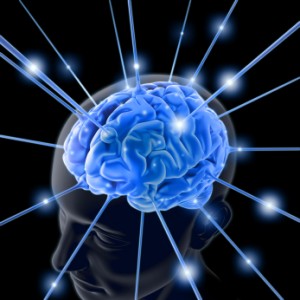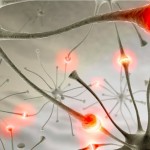We like to think what we do is under control of our thoughts…but what really controls our brain?
 We next learn affect. After empathizing with our parents we imitate how our parents feel about themselves in various situations. What automatically happens to our parents now happens to us. This is what creates the self image we have.
We next learn affect. After empathizing with our parents we imitate how our parents feel about themselves in various situations. What automatically happens to our parents now happens to us. This is what creates the self image we have.
It would be nice to enhance our brain so we could control how we automatically reacted and felt..
What if we could!
If we walked thru a blue door ten times and someone slapped us each time, we would develop an apprehension about going thru blue doors. We might be able to go thru any other color but when we went thru the blue ones, we would be apprehensive. Each time we went thru a blue door we would re-record the apprehensive feeling no matter how much we tried not to.
Some people that want us to be “present”, tell us to “think” in some way so that we can relax and be “present”. It may be possible to think and be present while we are relaxing but going thru that blue door requires all of our focus to relax a little. In real life situations, such as an argument, an unexpected stress or too many things happening at once… these “blue doors” happen without giving notice. When we go thru the blue doors that occur in real life, we do not do so well. The way we automatically prepare before we go thru the blue door is an instant and automatic reaction.
Our lives have many blue doors, they hold us back from the life we could have if we could open them.
The most powerful blue doors were created when we empathized with the way our parents felt about themselves. How our parents felt about themselves, came in thru the pre-motor pathway in our brain and is now how we automatically prepare for our blue doors.
The reason we created these memories is because of the wonderful chemistry that was within us because of the love we had for our parents. We felt a oneness with them that created chemicals that powerfully connected us to them and gave us empathy and a memory of their feelings inside of us.
We can use the same thing to enhance how we feel about ourselves now.
We can use the chemistry that our love creates within us to rewrite any erroneous affect we got from our parents.
When we are with a person we feel love and a “oneness” with, we release neurotransmitters, dopamine and nor-epinephrine. These give us a feeling of excitement and heightened perception.
The more we are together with the person we feel one with, the more we release endorphins and enkephalins, these powerful natural narcotics give us a sense of comfort, safety and well being.
The feeling of oneness we have may come from the neurotransmitter serotonin. The important thing for us is that these give us the opportunity to rewrite things very easily.
We have the opportunity to re-write many things that we keep looking to resolve. Love is a powerful healing tool and it gives us the opportunity to use re-condensation if we understand how.
We are able to permanently improve the self-image we automatically have.
We find the exact automatic preparation that inhibits us from having an experience of ourselves that has clarity. When we connect to the automatic preparation that gives us the altered perception or reaction, we can use re-condensation to create a better experience of ourselves.
It is simple, we put the information we want, in the file it belongs in. This technique is similar in some ways to just feeling good but the little extra is worth it.
Harvard psychiatrist Dr. Roger Pitman likened re-consolidation to a file in an office cabinet; if you want to adjust the contents, first you have to retrieve the file. But you can only make changes when it is opened.
Improving how we automatically prepare or react is important, the future will tell us just how important it is.




[…] you read my blog called “What Controls our Brain“, I am sure you saw that the non-verbal part of our brain, where our intent is located, […]
[…] you read my blog called “What Controls our Brain“, I am sure you saw that the non-verbal part of our brain, where our intent is located, […]
[…] you read my blog called “What Controls our Brain“, I am sure you saw that the non-verbal part of our brain, where our intent is located, […]